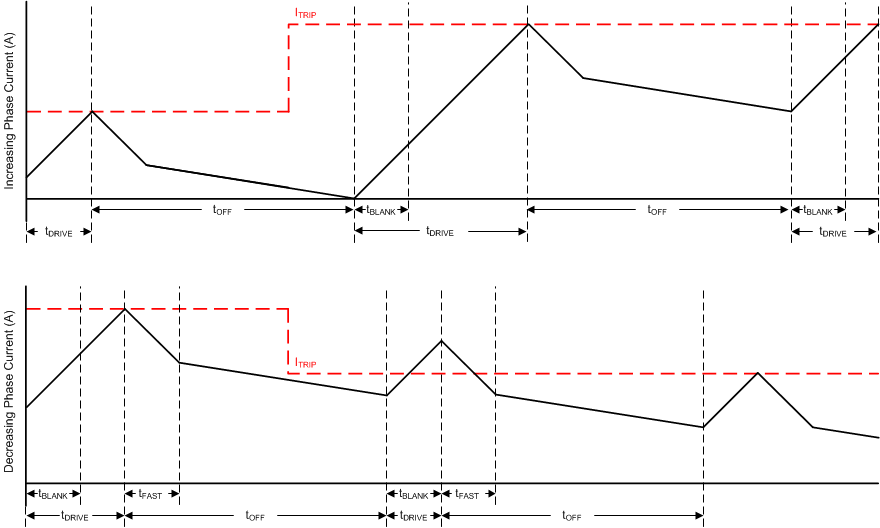JAJSCX0C October 2015 – November 2018 DRV8885
PRODUCTION DATA.
- 1 特長
- 2 アプリケーション
- 3 概要
- 4 改訂履歴
- 5 概要(続き)
- 6 Pin Configuration and Functions
- 7 Specifications
-
8 Detailed Description
- 8.1 Overview
- 8.2 Functional Block Diagram
- 8.3
Feature Description
- 8.3.1 Stepper Motor Driver Current Ratings
- 8.3.2 PWM Motor Drivers
- 8.3.3 Microstepping Indexer
- 8.3.4 Current Regulation
- 8.3.5 Controlling RREF With an MCU
- 8.3.6 Decay Modes
- 8.3.7 Blanking Time
- 8.3.8 Charge Pump
- 8.3.9 LDO Voltage Regulator
- 8.3.10 Logic and Multi-Level Pin Diagrams
- 8.3.11 Protection Circuits
- 8.4 Device Functional Modes
- 9 Application and Implementation
- 10Power Supply Recommendations
- 11Layout
- 12デバイスおよびドキュメントのサポート
- 13メカニカル、パッケージ、および注文情報
パッケージ・オプション
メカニカル・データ(パッケージ|ピン)
サーマルパッド・メカニカル・データ
発注情報
8.3.6.3 Mode 3: Mixed Decay for Increasing and Decreasing Current
 Figure 20. Mixed/Mixed Decay Mode
Figure 20. Mixed/Mixed Decay Mode Mixed decay begins as fast decay for a time, followed by slow decay for the remainder of tOFF. In this mode, mixed decay occurs for both increasing and decreasing current steps.
This mode exhibits ripple larger than slow decay, but smaller than fast decay. On decreasing current steps, mixed decay will settle to the new ITRIP level faster than slow decay.
In cases where current is held for a long time (no input in the STEP pin) or at very low stepping speeds, slow decay may not properly regulate current because no back-EMF is present across the motor windings. In this state, motor current can rise very quickly, and requires an excessively large off-time. Increasing/decreasing mixed decay mode allows the current level to stay in regulation when no back-EMF is present across the motor windings.